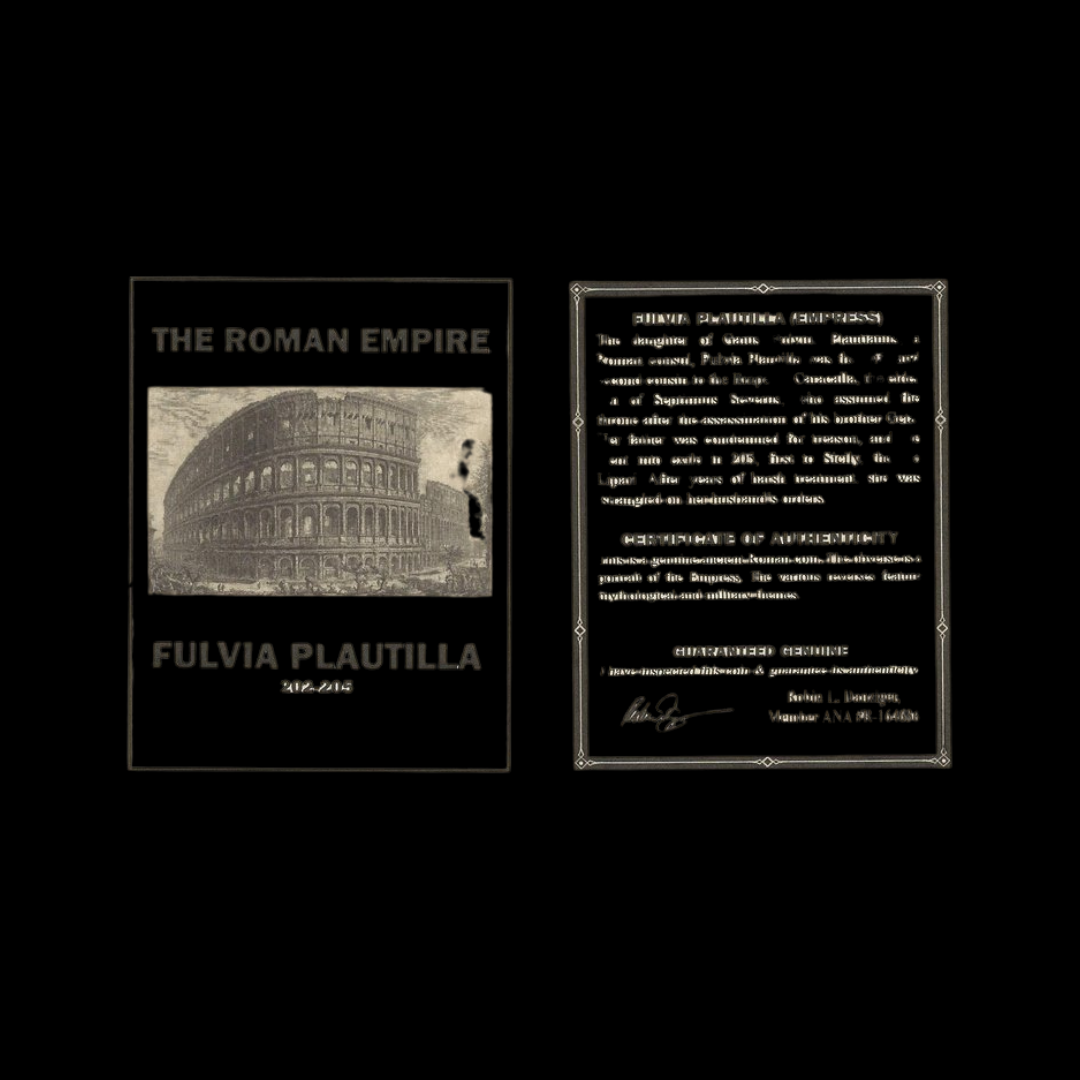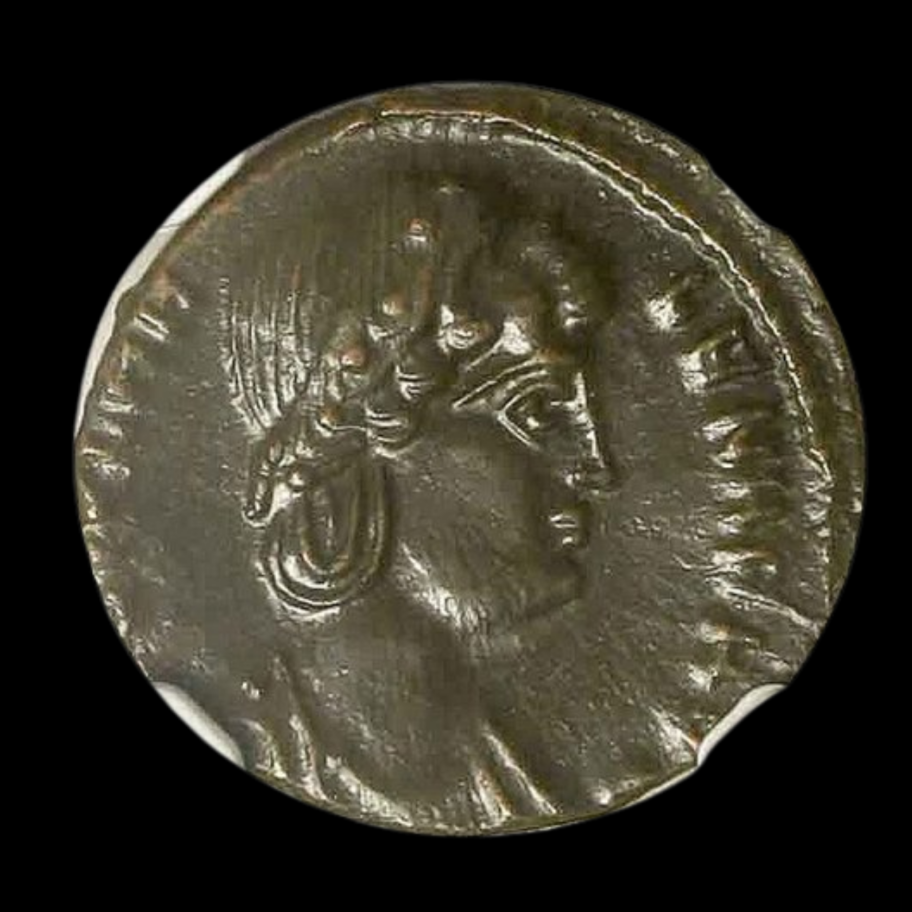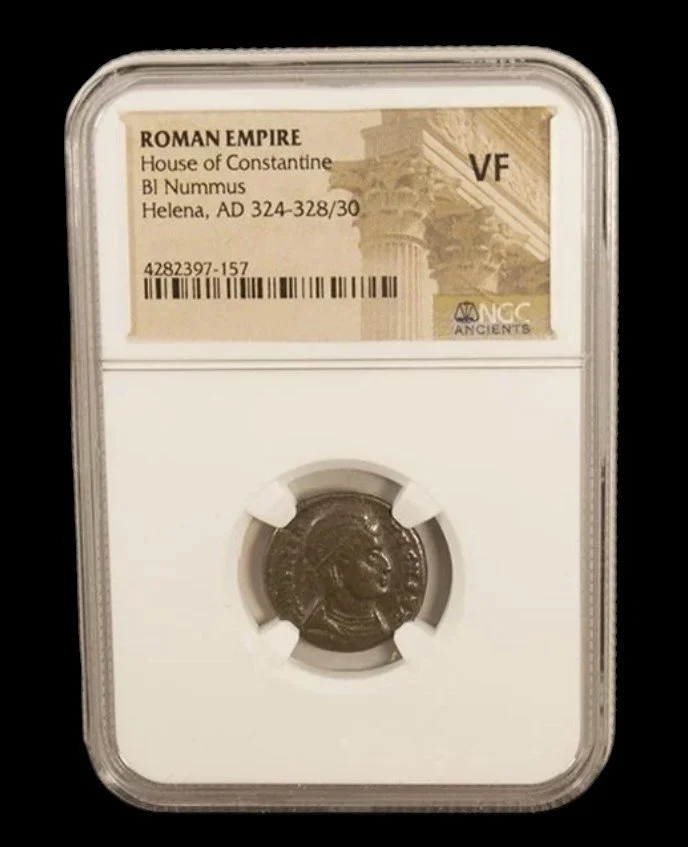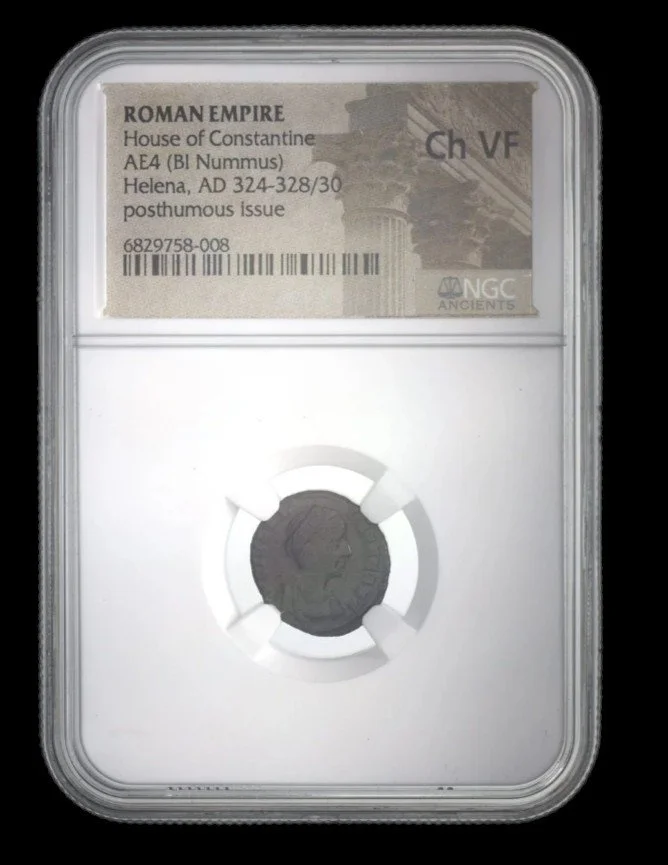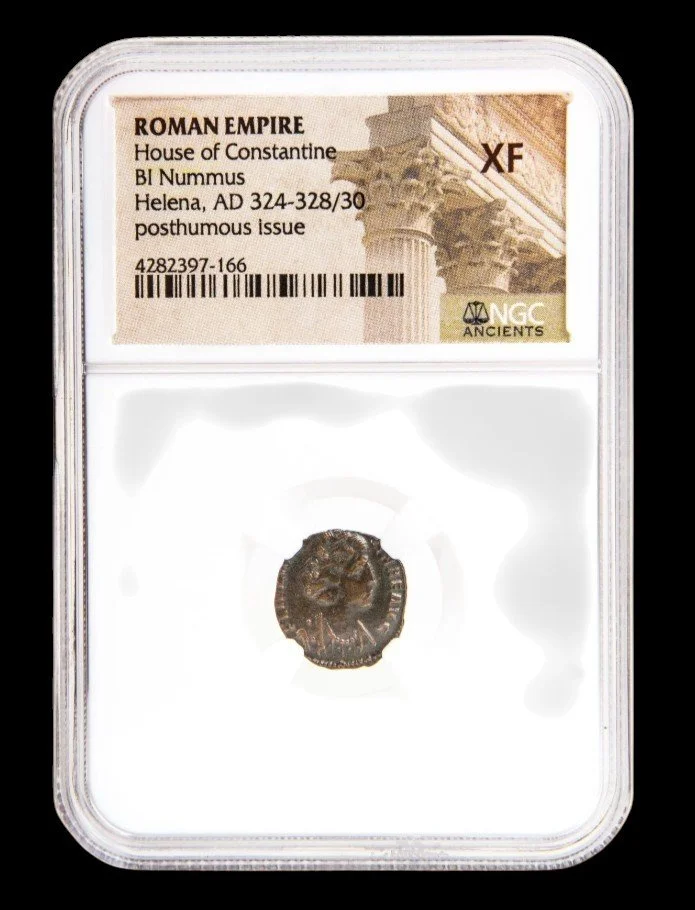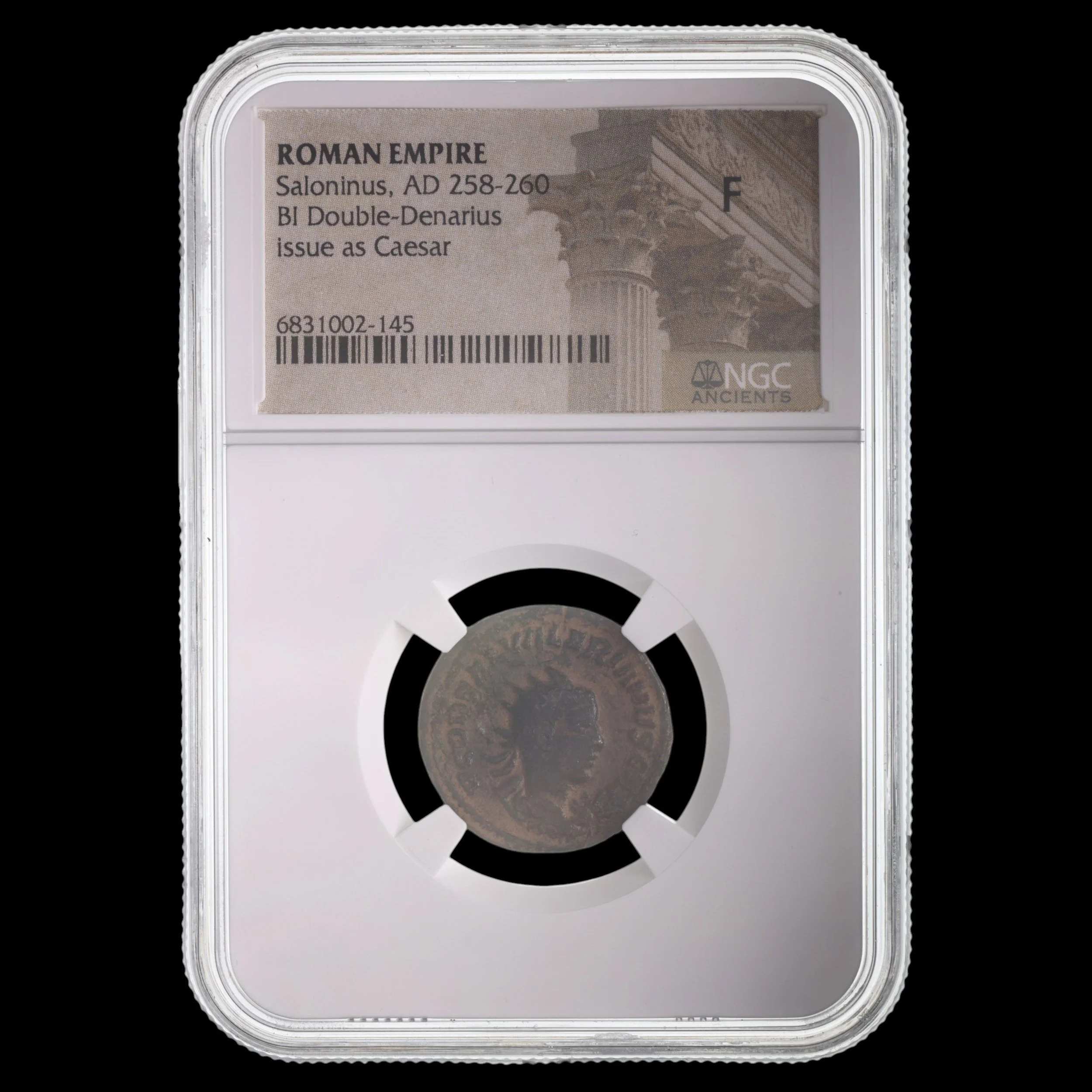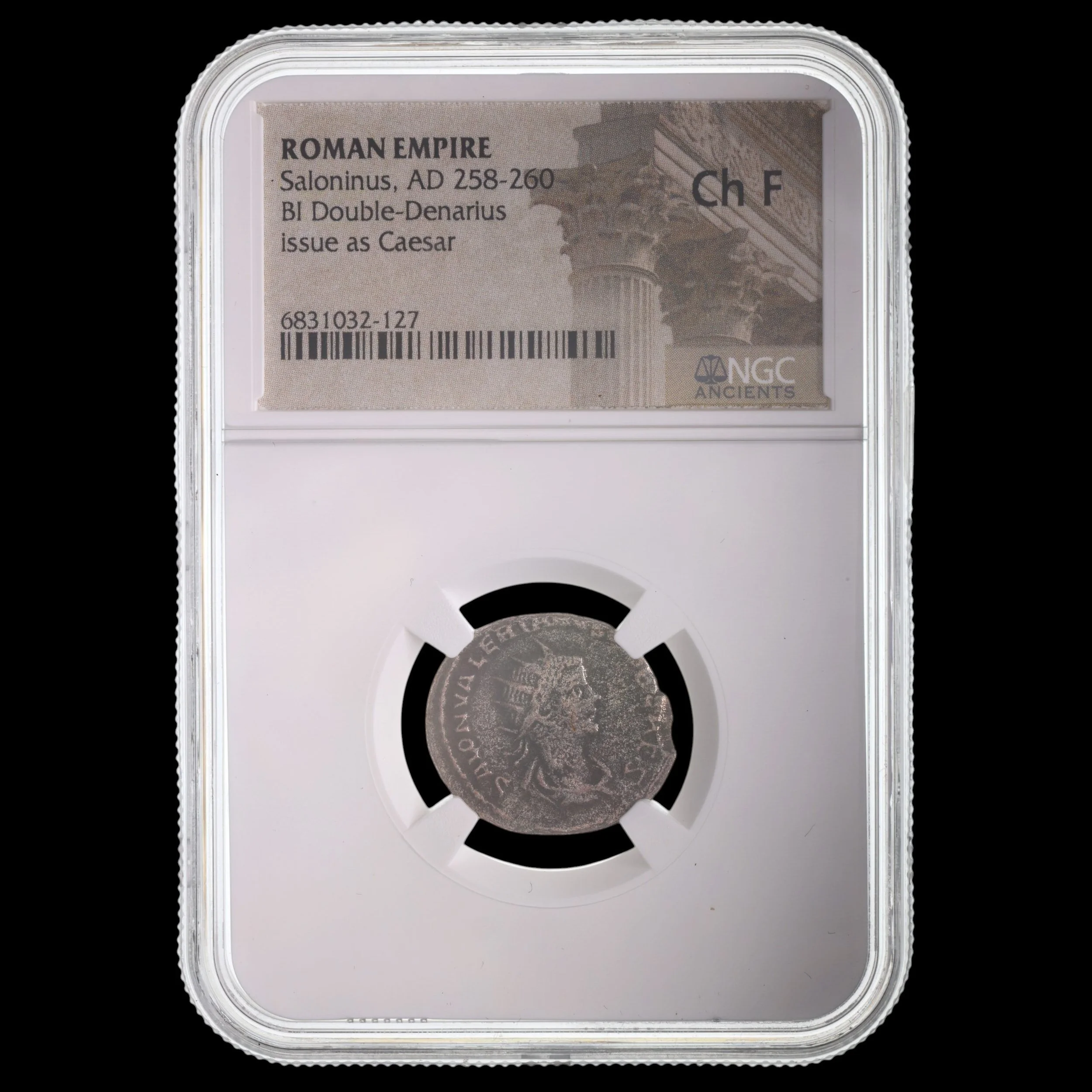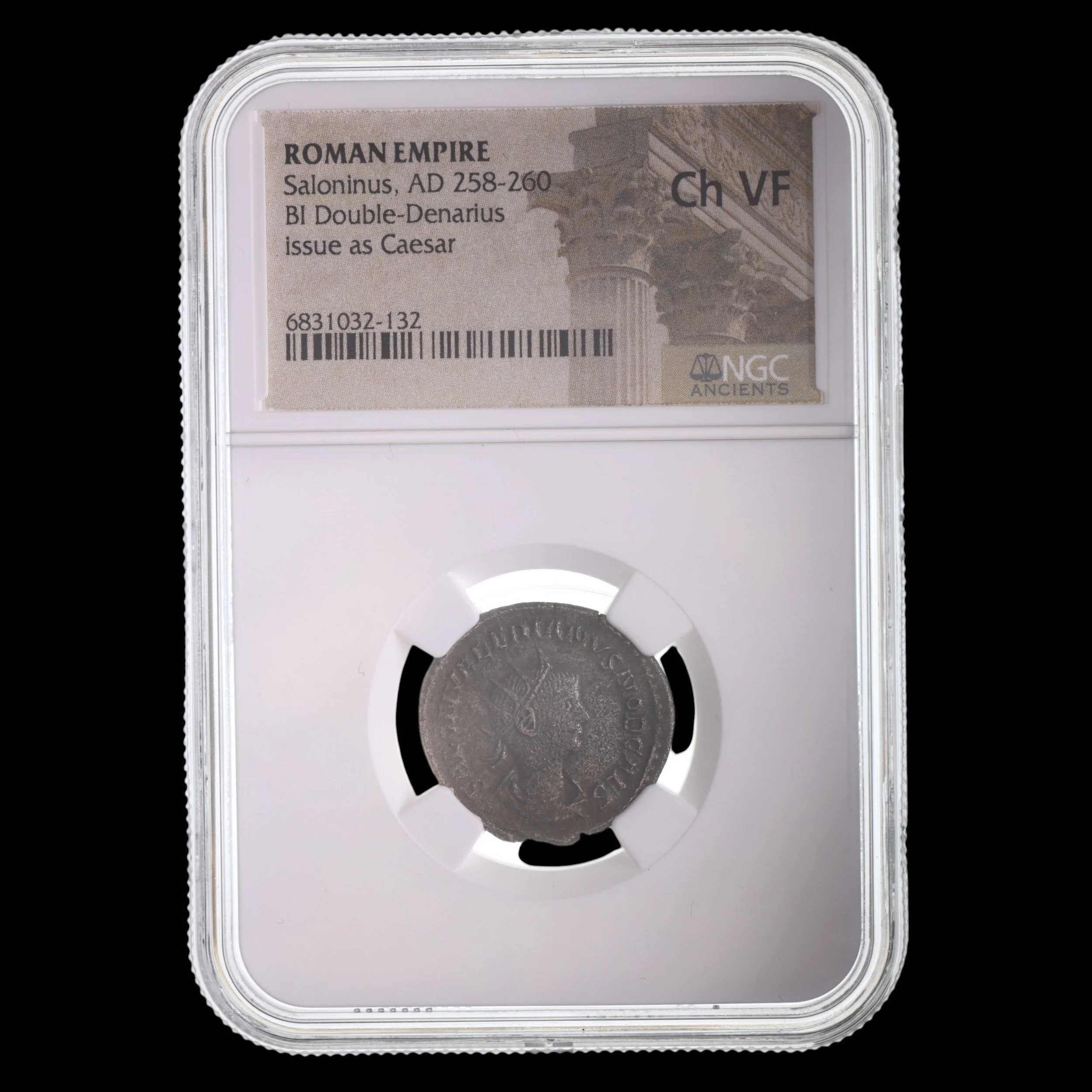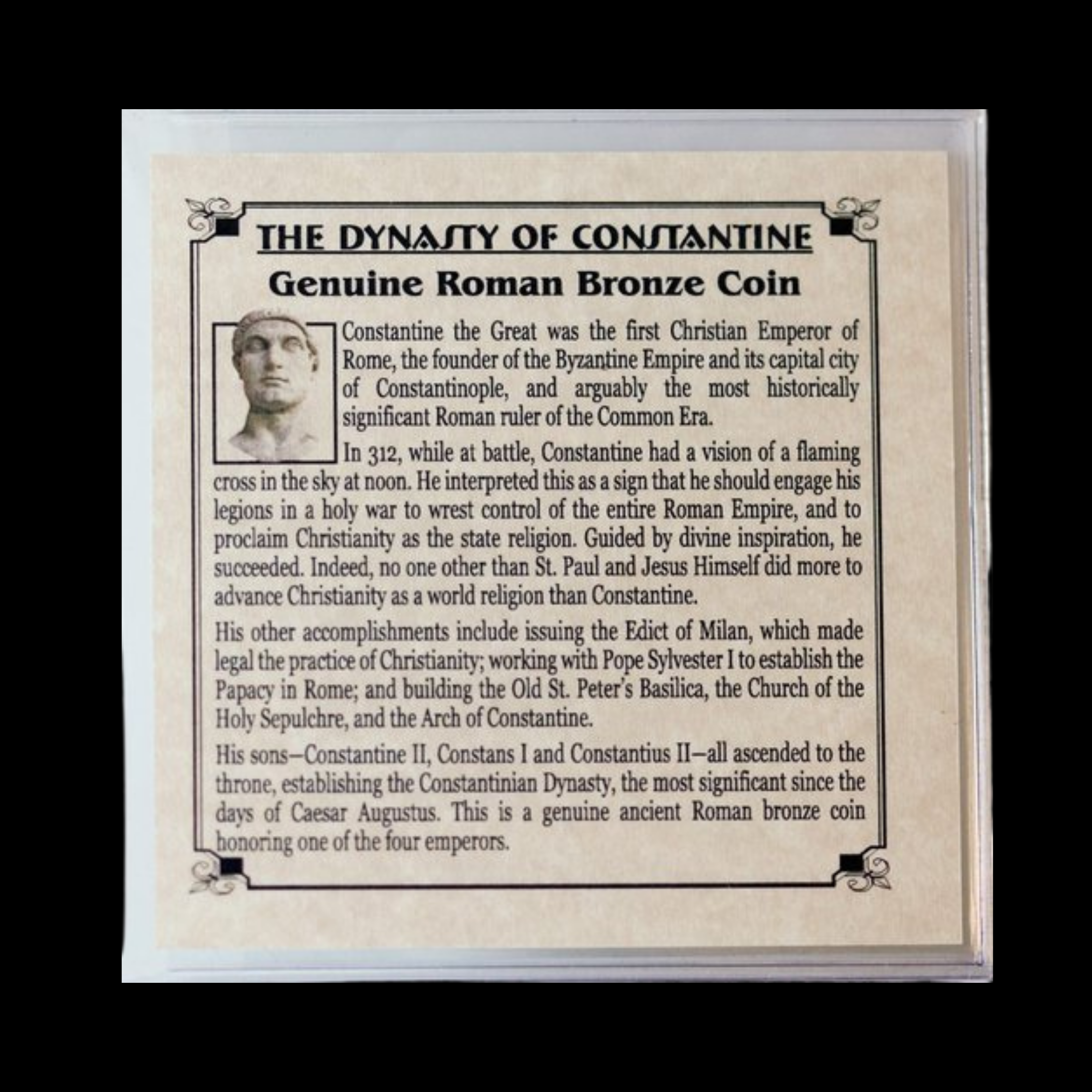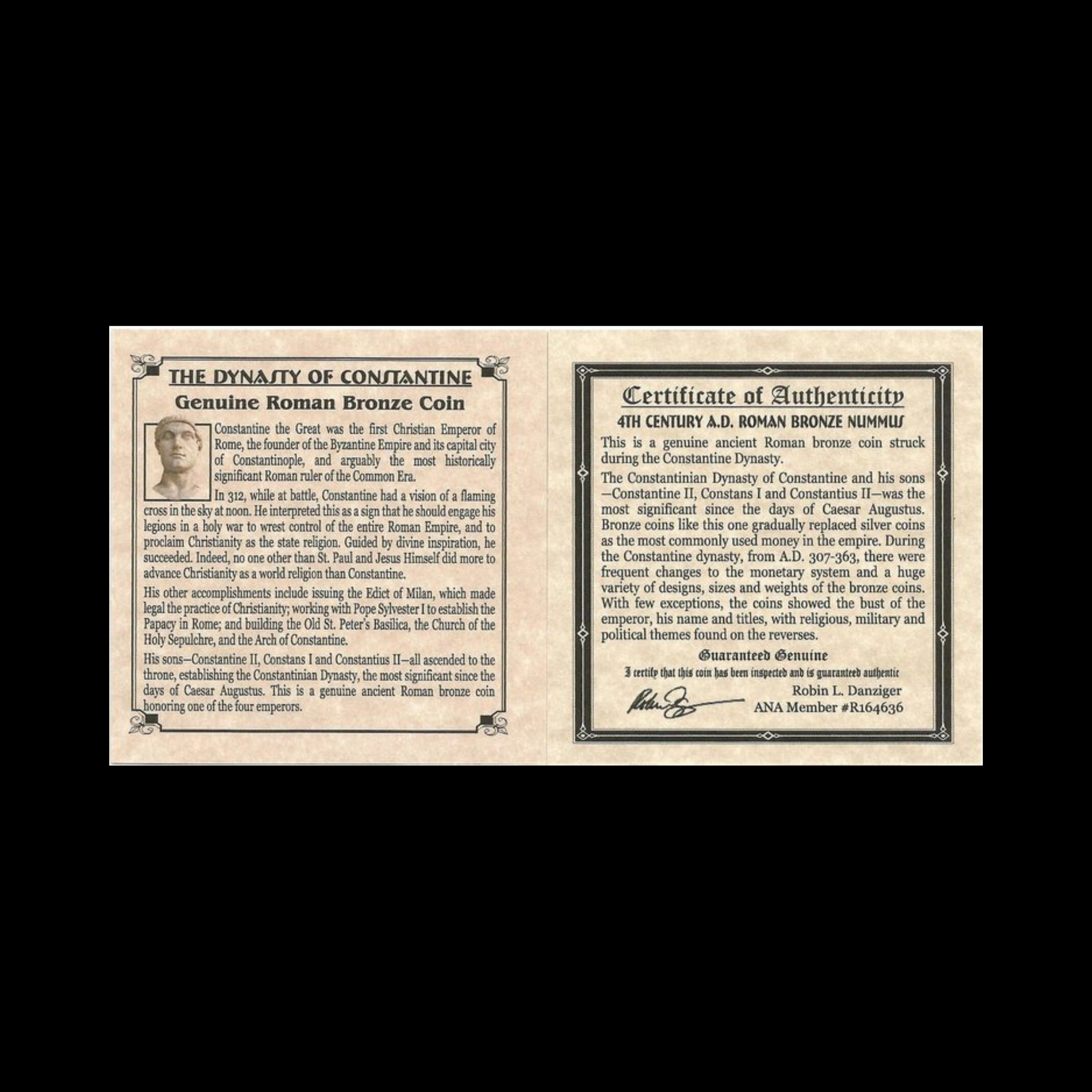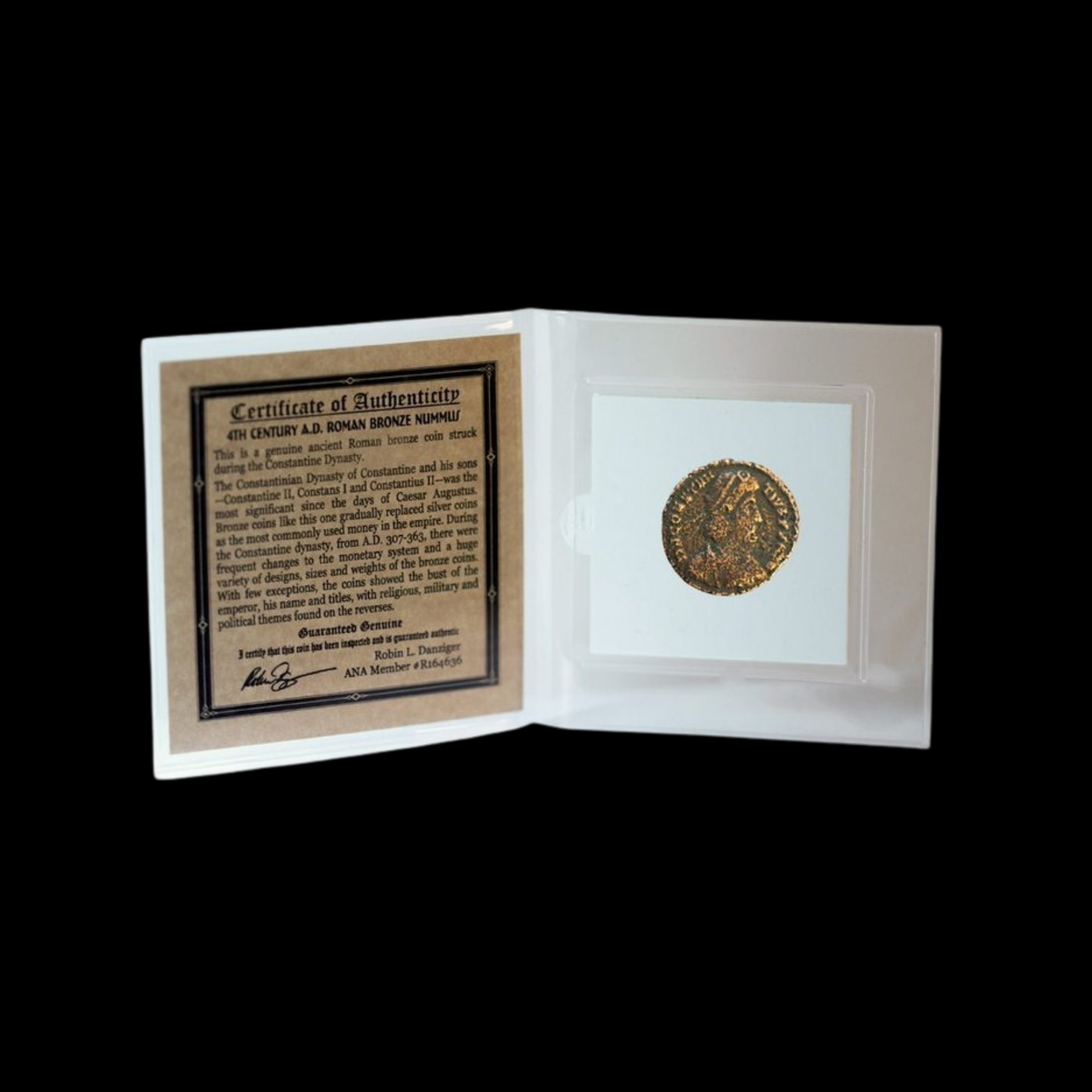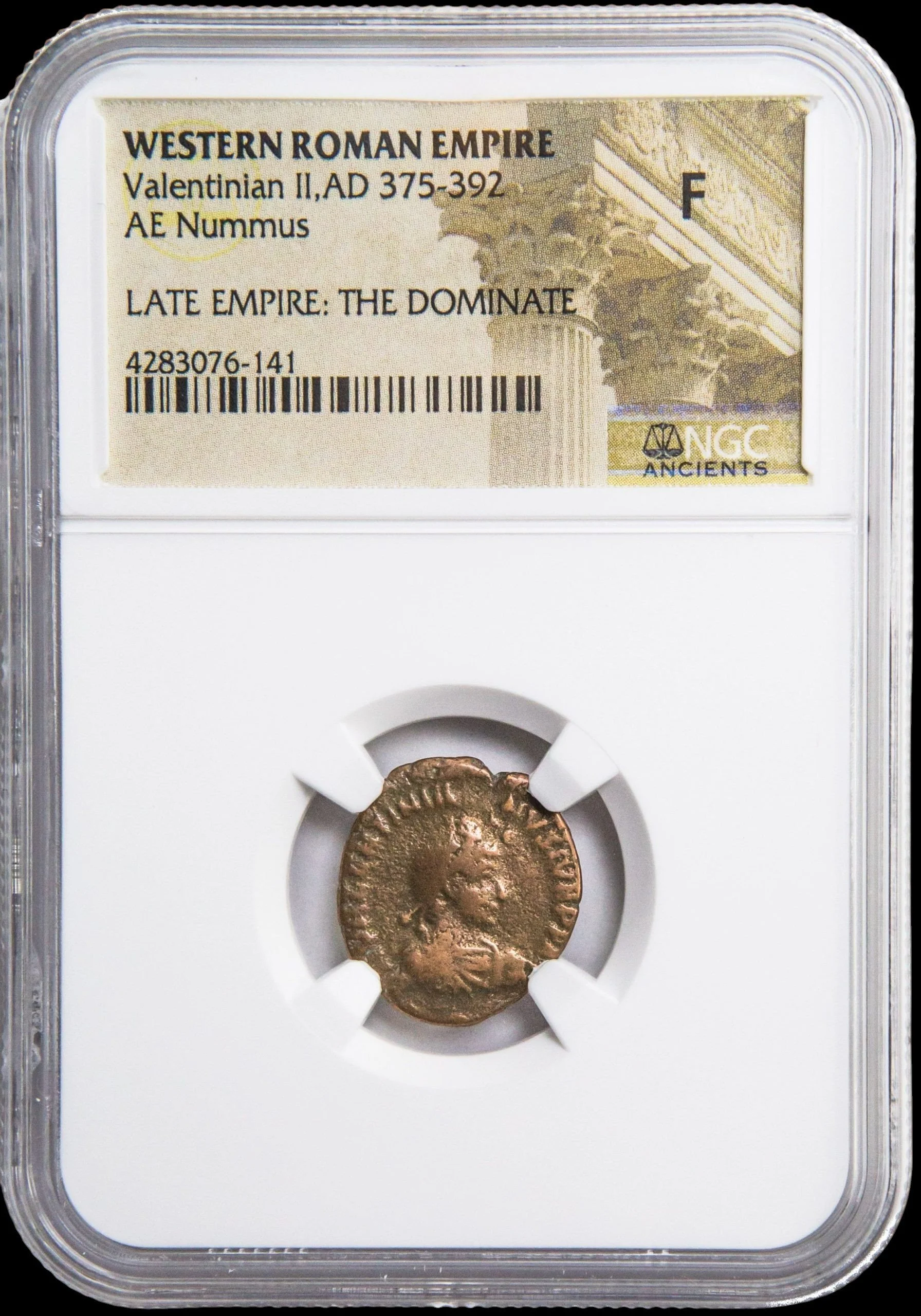 Image 1 of 6
Image 1 of 6

 Image 2 of 6
Image 2 of 6

 Image 3 of 6
Image 3 of 6

 Image 4 of 6
Image 4 of 6

 Image 5 of 6
Image 5 of 6

 Image 6 of 6
Image 6 of 6







Roman Bronze AE4 of Valentinian II (about 1,633-1,650 years ago)
The coins shown are representative examples of the grade and type, but not the actual specimens for sale. For details on NGC’s grading standards and definitions, please refer to our NGC Grading page.
This small bronze coin (AE4) was issued during the reign of Emperor Valentinian II, who ruled portions of the Western Roman Empire from 375 to 392 CE. Having ascended to the throne at just four years old following his father Valentinian I's death, this young emperor's coinage represents a period of continued dynastic legitimacy despite his limited actual authority.
Coin Description:
Front side: Portrait of the young Emperor Valentinian II facing right, wearing a pearl diadem and imperial robes, with his name and titles in Latin around the edge.
Back side: Likely features standard late Roman imagery such as Victory advancing, the emperor with standards, or religious/military symbolism common to the late 4th century.
Technical Details:
Bronze alloy composition
Denomination: AE4 (smallest standard bronze coin in the late Roman monetary system)
Weight: Approximately 1-2 grams
Diameter: Approximately 13-17 mm
NGC Certified for authentication and preservation
Minted between 375-392 CE
Condition as specified by NGC certification
Historical Significance: Valentinian II's seventeen-year reign illustrates the increasingly complex nature of late Roman imperial politics. Despite his imperial title, he never exercised genuine political power. Most western territories were controlled by the usurper Magnus Maximus, while in Italy his mother Justina served as the effective ruler. Religious controversies marked his reign as his mother favored Arian Christianity while Bishop Ambrose of Milan championed Nicene orthodoxy. After his mother's death, Valentinian II adopted Nicene Christianity but died before receiving baptism, prompting Saint Ambrose's theological development of "baptism of desire" in his funeral oration. His death at age 21, reportedly by strangulation orchestrated by his Frankish general Arbogast, highlights the vulnerability of imperial authority during a period when military commanders increasingly determined political succession.
The coins shown are representative examples of the grade and type, but not the actual specimens for sale. For details on NGC’s grading standards and definitions, please refer to our NGC Grading page.
This small bronze coin (AE4) was issued during the reign of Emperor Valentinian II, who ruled portions of the Western Roman Empire from 375 to 392 CE. Having ascended to the throne at just four years old following his father Valentinian I's death, this young emperor's coinage represents a period of continued dynastic legitimacy despite his limited actual authority.
Coin Description:
Front side: Portrait of the young Emperor Valentinian II facing right, wearing a pearl diadem and imperial robes, with his name and titles in Latin around the edge.
Back side: Likely features standard late Roman imagery such as Victory advancing, the emperor with standards, or religious/military symbolism common to the late 4th century.
Technical Details:
Bronze alloy composition
Denomination: AE4 (smallest standard bronze coin in the late Roman monetary system)
Weight: Approximately 1-2 grams
Diameter: Approximately 13-17 mm
NGC Certified for authentication and preservation
Minted between 375-392 CE
Condition as specified by NGC certification
Historical Significance: Valentinian II's seventeen-year reign illustrates the increasingly complex nature of late Roman imperial politics. Despite his imperial title, he never exercised genuine political power. Most western territories were controlled by the usurper Magnus Maximus, while in Italy his mother Justina served as the effective ruler. Religious controversies marked his reign as his mother favored Arian Christianity while Bishop Ambrose of Milan championed Nicene orthodoxy. After his mother's death, Valentinian II adopted Nicene Christianity but died before receiving baptism, prompting Saint Ambrose's theological development of "baptism of desire" in his funeral oration. His death at age 21, reportedly by strangulation orchestrated by his Frankish general Arbogast, highlights the vulnerability of imperial authority during a period when military commanders increasingly determined political succession.



